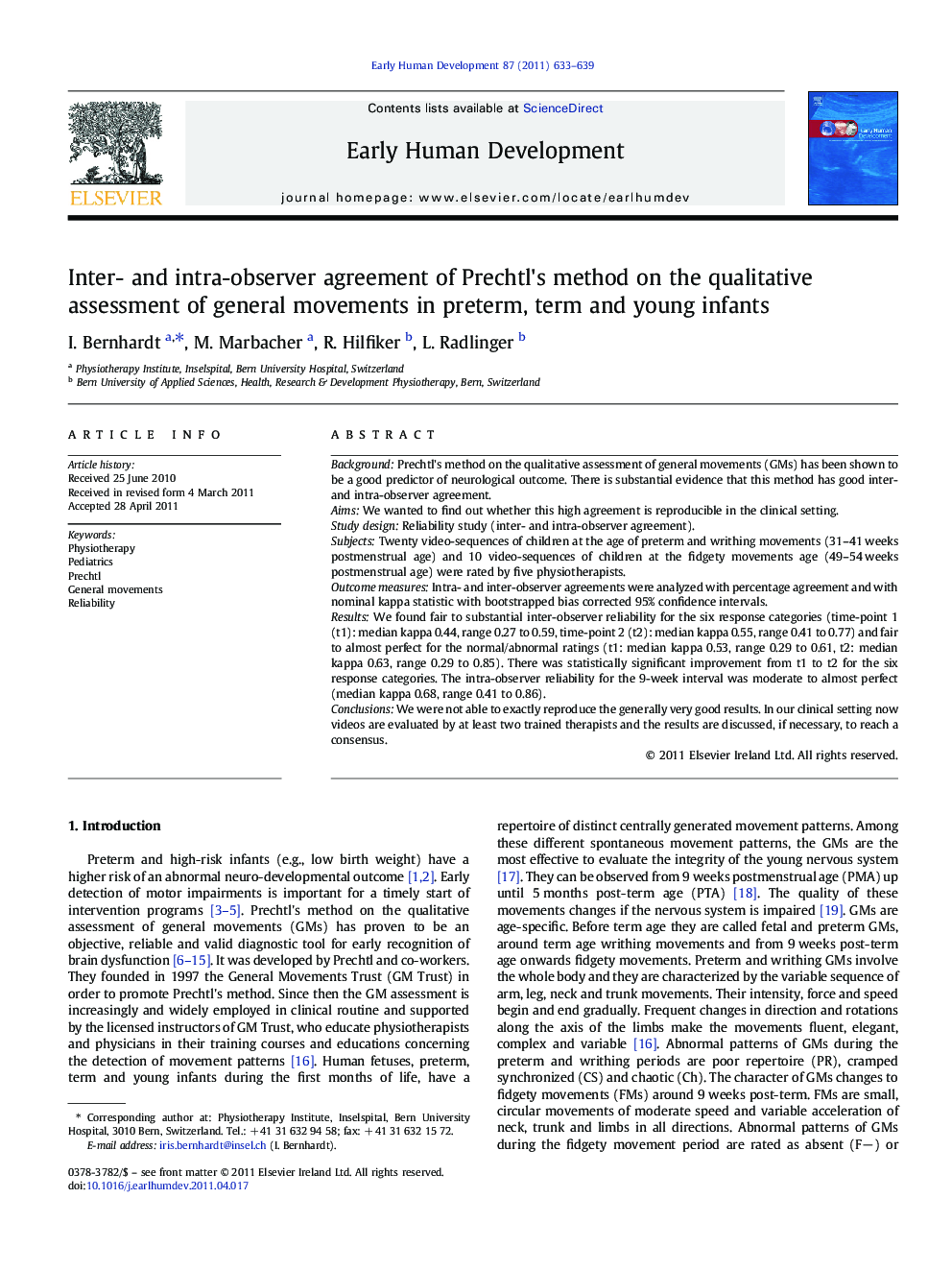| Article ID | Journal | Published Year | Pages | File Type |
|---|---|---|---|---|
| 3917040 | Early Human Development | 2011 | 7 Pages |
BackgroundPrechtl's method on the qualitative assessment of general movements (GMs) has been shown to be a good predictor of neurological outcome. There is substantial evidence that this method has good inter- and intra-observer agreement.AimsWe wanted to find out whether this high agreement is reproducible in the clinical setting.Study designReliability study (inter- and intra-observer agreement).SubjectsTwenty video-sequences of children at the age of preterm and writhing movements (31–41 weeks postmenstrual age) and 10 video-sequences of children at the fidgety movements age (49–54 weeks postmenstrual age) were rated by five physiotherapists.Outcome measuresIntra- and inter-observer agreements were analyzed with percentage agreement and with nominal kappa statistic with bootstrapped bias corrected 95% confidence intervals.ResultsWe found fair to substantial inter-observer reliability for the six response categories (time-point 1(t1): median kappa 0.44, range 0.27 to 0.59, time-point 2 (t2): median kappa 0.55, range 0.41 to 0.77) and fair to almost perfect for the normal/abnormal ratings (t1: median kappa 0.53, range 0.29 to 0.61, t2: median kappa 0.63, range 0.29 to 0.85). There was statistically significant improvement from t1 to t2 for the six response categories. The intra-observer reliability for the 9-week interval was moderate to almost perfect (median kappa 0.68, range 0.41 to 0.86).ConclusionsWe were not able to exactly reproduce the generally very good results. In our clinical setting now videos are evaluated by at least two trained therapists and the results are discussed, if necessary, to reach a consensus.
